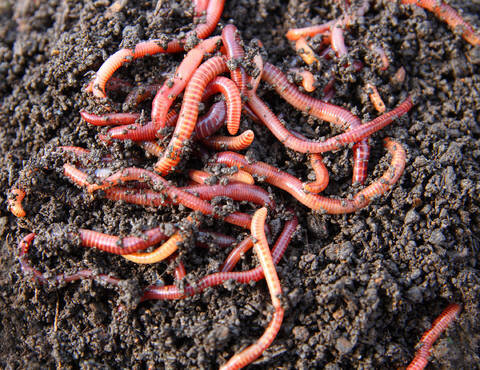Red wigglers: For backyard gardening
Red wigglers: For backyard gardening
Blog Article
Whatever You Need to Find Out About Red Wigglers for Composting
Red wigglers, or Eisenia fetida, play a critical duty in the realm of composting, changing organic waste right into important dirt changes. The process of establishing up a worm bin and keeping it can posture difficulties.
What Are Red Wigglers?

(Western North Carolina Worm Farms)
Native to The United States and copyright, red wigglers are surface-dwelling organisms that favor wet, warm environments rich in breaking down natural matter. Their diet is composed mostly of decaying plant product, food scraps, and various other natural debris, which they eat and damage down effectively. As they digest this material, they produce nutrient-rich castings that improve dirt fertility.
Red wigglers are hermaphroditic, possessing both male and women reproductive organs, and can duplicate promptly under ideal conditions. In general, red wigglers are essential factors to the process of recycling organic waste right into beneficial garden compost.
Benefits of Utilizing Red Wigglers
Utilizing red wigglers in composting systems uses numerous benefits that enhance both the performance of waste monitoring and the top quality of the resulting garden compost. These worms, scientifically called Eisenia fetida, are particularly efficient at breaking down natural matter, transforming kitchen area scraps and yard waste right into nutrient-rich compost at an increased price.
One of the key advantages of making use of red wigglers is their capacity to consume large amounts of natural material, typically refining their weight in food waste daily. This high intake rate brings about quicker decay and decreases the quantity of waste sent out to landfills. Additionally, the castings produced by red wigglers are rich in necessary nutrients, helpful bacteria, and enzymes, making them an excellent fertilizer for yards and plants.
In addition, red wigglers flourish in a variety of settings, making them adaptable for both indoor and outdoor composting systems - red wigglers. Their existence in a compost bin assists to freshen the material, stopping smells and advertising a healthy and balanced composting process. Overall, utilizing red wigglers not only adds to reliable waste administration but additionally sustains lasting gardening practices via the manufacturing of high-quality compost
(red wiggler worms)
Setting Up Your Worm Bin
To successfully set up a worm container, it is important to select an appropriate container that satisfies the requirements of red wigglers while giving a helpful environment for composting. A suitable bin can be made from plastic, timber, or steel, with a capacity of at the very least 1 square foot for every single pound of worms.
Make sure the container has adequate water drainage openings to stop excess dampness, as red wigglers prosper in a moist, but not waterlogged, atmosphere. red wigglers. The container must likewise be ventilated to give enough air movement, stopping anaerobic conditions that could hurt the worms
An ideal place for the worm bin is an amazing, dark location, cost-free from direct sunshine and severe temperatures, as red wigglers favor a temperature level variety of 55 to 77 levels Fahrenheit.
Prior to presenting the worms, prepare bed linens materials such as shredded newspaper, cardboard, or coconut coir, which will certainly give both environment and food. Dampen the bedding lightly to develop an inviting atmosphere for the worms. Take into consideration putting a lid on the bin to preserve moisture and lower bugs, while guaranteeing it can be easily removed for upkeep.
Feeding and Treatment Standards
Feeding red wigglers is an important aspect of maintaining a healthy and balanced composting system. These worms grow on a diverse diet plan, mainly made up of natural products such as fruit and veggie scraps, coffee premises, and smashed eggshells. It is important to prevent feeding them meat, dairy, and oily foods, as these can create unpleasant odors and attract bugs.
When introducing food to your worm bin, chop or shred products right into smaller sized pieces to facilitate quicker disintegration. Begin with small quantities to determine the worms' intake rate, progressively enhancing the quantity as they adjust. It is a good idea to alternate feeding areas within the container to motivate thorough blending and oygenation of the compost.

Troubleshooting Common Issues
Maintaining a growing worm composting system can occasionally offer obstacles that require focus and troubleshooting. Usual problems consist of an undesirable odor, which commonly indicates overfeeding or the visibility of anaerobic problems. To correct this, decrease the quantity of food included and make certain proper oygenation by blending the bed linen material.
An additional frequent trouble is the retreat of worms from the bin. This can take place because of too much moisture or improper ecological problems. Regularly check the dampness levels, aiming for a wet however not soggy uniformity, and maintain optimum temperatures in between 60-80 ° F(15-27 ° C )to develop a comfy habitat for your red wigglers.
Parasites, such as fruit flies, can likewise get into worm containers. red wigglers. To battle this, cover food scraps with a layer of bedding or shredded paper to hinder flies from laying eggs. Furthermore, make certain that any food added is fresh and cost-free from mold, which can draw in undesirable pests
Finally, if your worms appear non-active, look for anxiety aspects such as temperature level changes or insufficient wetness. Attending to these typical concerns will visit this site right here certainly aid maintain a healthy and productive worm composting system.
Conclusion
In summary, red wigglers, or Eisenia fetida, play a crucial function in lasting waste management with vermicomposting. Their ability to successfully transform natural waste into nutrient-dense castings enhances dirt wellness and advertises plant growth. Proper arrangement and maintenance of a worm bin, along with adherence to feeding guidelines, make sure a successful environment that lessens landfill contributions. Addressing usual issues promptly additionally sustains the efficiency of this ecological technique, contributing to ecological sustainability and agricultural performance.
Report this page